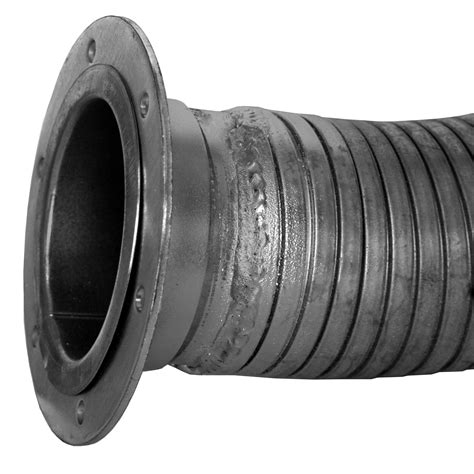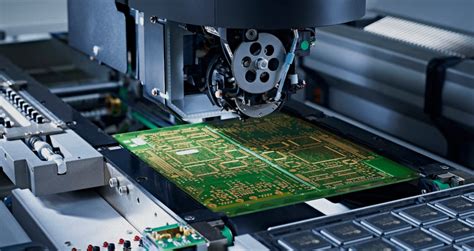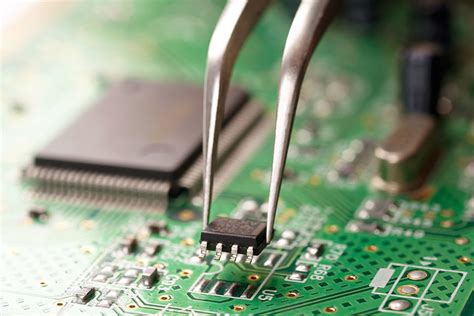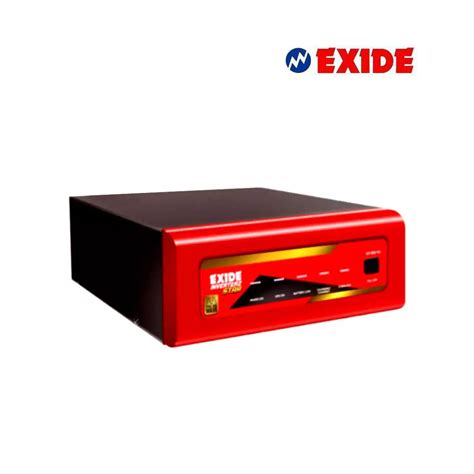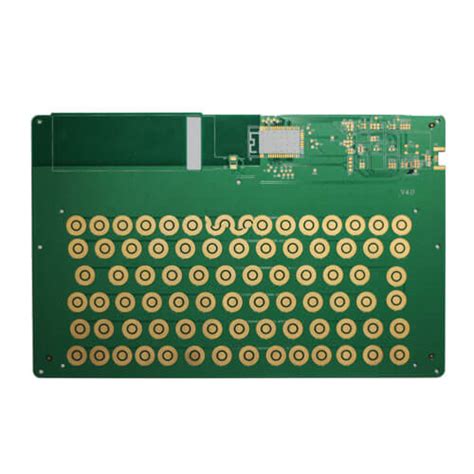Advanced Rigid Flex Assembly Techniques for Durable Device Fabrication
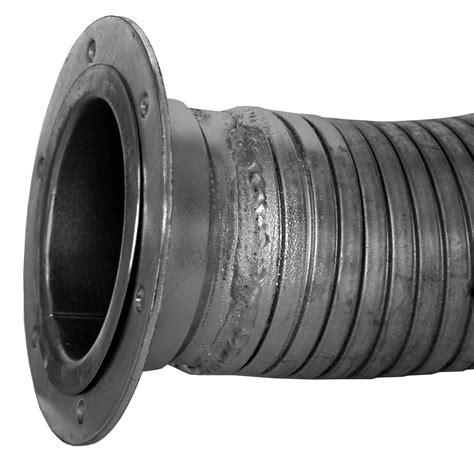
Key Takeaways
Modern rigid flex assembly processes demand meticulous integration of precision engineering and material science to meet the durability requirements of compact electronics. At the core of PCB assembly (PCBA), designers prioritize thermal management through advanced techniques such as embedded copper layers and thermally conductive adhesives, which mitigate heat buildup in high-density layouts.
"The synergy between material selection and assembly precision directly impacts the operational lifespan of rigid flex circuits in harsh environments." – Industry Expert
For reliable interconnects, manufacturers employ laser-drilled microvias and staggered plating, ensuring signal integrity even under mechanical stress. Below is a comparison of key PCBA strategies for miniaturized devices:
| Technique | Application | Benefit |
|---|---|---|
| Embedded Components | High-density rigid flex | Reduced footprint, improved EMI |
| Conformal Coating | Harsh environment protection | Moisture resistance, insulation |
| Sequential Lamination | Multilayer stacking | Enhanced layer adhesion |
To optimize stress-resistant materials, polyimide substrates paired with rolled annealed copper foils provide exceptional flexibility without compromising electrical performance. Innovative soldering methods, such as low-temperature solders and selective laser reflow, further enhance connection robustness.
Pro Tip: When designing for accelerated testing protocols, incorporate thermal cycling and vibration simulations early in the PCB assembly phase to preemptively address failure points. This proactive approach aligns with the demand for long-term reliability in aerospace, medical, and automotive applications.
Transitioning seamlessly from design to production requires harmonizing material optimization with PCBA workflows, ensuring each layer and component contributes to the final product’s resilience. By leveraging these advanced methodologies, engineers can achieve durable device fabrication that withstands both operational and environmental challenges.
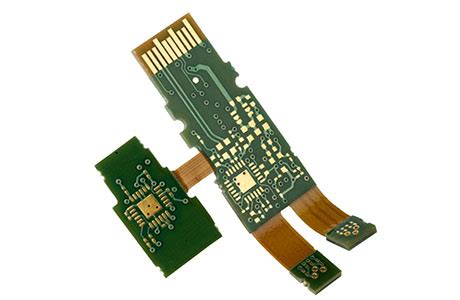
Precision Engineering in Rigid Flex Circuit Design
Modern rigid flex assembly relies on exacting geometric tolerances and meticulous layer alignment to ensure seamless integration between rigid and flexible circuit zones. By leveraging advanced simulation tools, engineers optimize trace routing architectures and via placement to minimize signal loss while accommodating dynamic mechanical stresses. Critical PCB assembly workflows incorporate laser-cut apertures and hybrid adhesives to maintain structural integrity during repeated flexing cycles, a necessity for aerospace and medical devices.
In high-density PCBA applications, precision extends to material selection, where polyimide substrates paired with rolled annealed copper foils reduce cracking risks under thermal expansion. Automated optical inspection (AOI) systems validate micron-level accuracy in solder mask application, ensuring reliable interconnects even in submillimeter pitch components. These methodologies not only enhance device longevity but also enable scalable production of ultra-thin, multilayer designs. By harmonizing computational modeling with empirical testing, manufacturers achieve repeatable results across complex rigid flex assembly projects, setting the stage for subsequent innovations in thermal management and miniaturization.
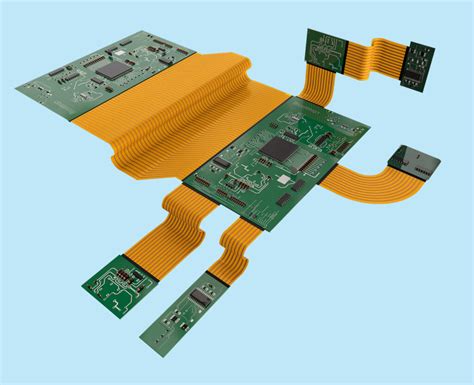
Material Optimization for Enhanced Device Durability
Achieving long-term reliability in rigid flex assembly demands meticulous selection of materials that balance mechanical resilience with electrical performance. Central to this process is the integration of high-performance substrates such as polyimide or liquid crystal polymer (LCP), which offer exceptional thermal stability and resistance to flexural stress. These materials are particularly critical in PCB assembly workflows, where repeated thermal cycling and mechanical strain can compromise traditional FR-4 laminates.
Advanced adhesive systems play an equally vital role, ensuring robust bonding between rigid and flexible layers while mitigating delamination risks. For instance, acrylic-based adhesives modified with silicone fillers enhance vibration damping in PCBA environments, a key requirement for aerospace and automotive applications. Additionally, the use of low-loss dielectrics minimizes signal degradation in high-frequency circuits, directly contributing to sustained performance in compact, multi-layered designs.
Material compatibility extends to conductive elements, where copper alloys with trace additives like nickel or zinc improve fatigue resistance at interconnection points. This optimization is further amplified through surface finishes such as electroless nickel immersion gold (ENIG), which prevents oxidation while maintaining solderability. By aligning material properties with operational stressors, engineers can systematically extend the service life of rigid flex assemblies, even under prolonged exposure to humidity, temperature extremes, or dynamic loading conditions.

Advanced Thermal Management in Compact Electronics
Effective heat dissipation remains a critical challenge in modern PCB assembly, particularly as miniaturized devices demand higher power densities. Thermal vias, embedded heat spreaders, and thermally conductive dielectric materials are now integral to PCBA designs, enabling efficient heat transfer away from sensitive components. Engineers leverage computational fluid dynamics (CFD) simulations to optimize airflow patterns in compact enclosures, while phase-change materials (PCMs) provide passive thermal buffering in space-constrained applications.
A key advancement lies in the integration of high-performance substrates like polyimide-aluminum hybrids, which combine flexibility with superior thermal conductivity. These materials reduce hotspots in rigid-flex assemblies, extending operational lifespans under cyclic thermal loads. Additionally, selective laser ablation techniques allow precise control over copper weight distribution, balancing electrical performance with thermal dissipation needs.
For PCBA processes, reflow profiling now incorporates real-time infrared monitoring to prevent solder joint degradation during rapid temperature fluctuations. Advanced underfill materials with nano-enhanced thermal properties further stabilize interconnects in high-vibration environments. By aligning material selection with PCB assembly workflows, manufacturers achieve sub-10°C/mm thermal gradients even in multilayer configurations, ensuring reliability across aerospace, automotive, and medical applications.
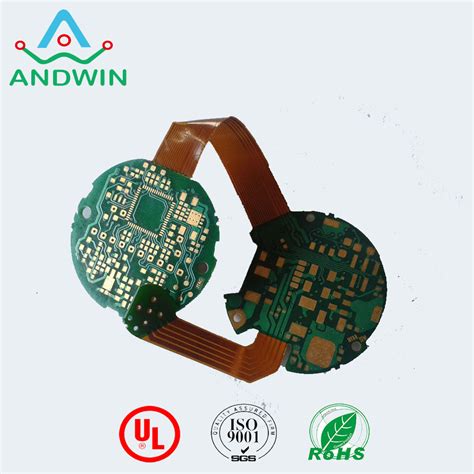
Reliable Interconnect Solutions for Harsh Environments
In demanding operational conditions—such as extreme temperatures, moisture exposure, or mechanical vibration—achieving reliable interconnects requires a combination of advanced PCB assembly techniques and material science innovations. Modern PCBA processes leverage high-performance substrates like polyimide or liquid crystal polymer (LCP), which maintain structural integrity under thermal cycling and chemical exposure. To prevent signal degradation, engineers employ gold-plated contacts or immersion silver finishes, enhancing conductivity while resisting corrosion.
Critical to success is the integration of rigid-flex circuit designs, which reduce connector points vulnerable to stress. For instance, laser-drilled microvias in PCB assembly enable shorter signal paths, minimizing impedance fluctuations in high-frequency applications. Adhesives with elastic modulus tuning further absorb mechanical shocks, ensuring lasting bonds between rigid and flexible sections.
Environmental resilience is amplified through conformal coatings, such as parylene or silicone-based films, which shield circuits from particulate ingress and humidity. Accelerated life testing—including thermal shock chambers and vibration simulations—validates PCBA robustness before deployment. By aligning material selection with precision manufacturing, these strategies ensure uninterrupted performance in aerospace, automotive, and industrial systems, where failure is not an option.
High-Density Assembly Techniques for Miniaturized Devices
Achieving high-density assembly in miniaturized electronics demands precision-driven strategies to balance component density with functional integrity. Modern PCB assembly processes leverage microvia technology and stacked interconnects to accommodate shrinking form factors, enabling multilayer configurations without compromising signal integrity. Advanced PCBA workflows integrate laser-drilled vias and ultra-fine-pitch components, reducing spatial footprints while maintaining robust electrical pathways.
A critical challenge lies in managing thermal dissipation and mechanical stress within tightly packed layouts. Engineers employ embedded passive components and flex-rigid hybrids to distribute heat efficiently, aligning with material optimization principles discussed earlier. Additionally, automated optical inspection (AOI) systems ensure micron-level accuracy during component placement, mitigating risks of solder bridging or misalignment in dense arrays.
To enhance reliability, anisotropic conductive films (ACFs) and low-temperature solders are prioritized for bonding delicate components, preserving structural stability under dynamic operating conditions. These techniques synergize with stress-resistant material selections, forming a cohesive approach to durable device fabrication. As miniaturization trends accelerate, iterative advancements in PCB assembly tooling and PCBA validation protocols remain pivotal for sustaining performance in next-generation compact electronics.
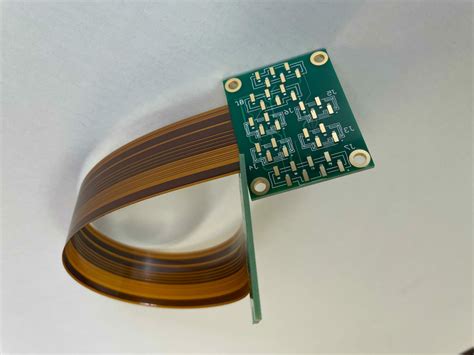
Stress-Resistant Materials in Flexible Circuit Fabrication
The selection of stress-resistant materials plays a pivotal role in ensuring the longevity of flexible circuits, particularly in applications exposed to mechanical strain or thermal cycling. Modern flexible PCB assembly (PCBA) processes increasingly rely on advanced polymers like polyimide and liquid crystal polymer (LCP), which combine high tensile strength with exceptional thermal stability. These materials mitigate cracking and delamination risks during repeated bending, a critical factor in wearable electronics and aerospace systems.
To enhance compatibility with rigid-flex assembly workflows, material formulations now integrate low-CTE (coefficient of thermal expansion) substrates, reducing mismatches between rigid and flexible layers during PCB assembly. Innovations such as adhesive-less laminates further minimize interfacial stress, improving signal integrity in high-density interconnects. For harsh environments, hybrid material stacks incorporating aramid fibers or silicon-based coatings provide additional protection against moisture and chemical exposure.
Testing protocols validate these material choices through accelerated thermal shock tests and dynamic mechanical analysis, ensuring performance under extreme conditions. By aligning material properties with PCBA design requirements, engineers achieve reliable, durable circuits capable of sustaining operational demands in compact, multi-functional devices.
Innovative Soldering Methods for Robust Connections
Modern PCB assembly processes demand soldering techniques that withstand mechanical stress and thermal cycling while maintaining electrical integrity. Advanced laser reflow soldering enables precise heat application, minimizing thermal distortion in rigid-flex PCBA designs. This method achieves micron-level accuracy for fine-pitch components, critical in high-density layouts common to aerospace and medical devices.
For hybrid rigid-flex architectures, low-temperature soldering alloys combined with fluxless processes reduce intermetallic compound formation, enhancing joint durability under repeated flexing. Selective soldering systems further optimize reliability by targeting specific connection points without exposing adjacent temperature-sensitive materials.
Integration of conductive adhesive bonding complements traditional soldering in PCBA workflows, particularly for dissimilar material interfaces. These adhesives provide mechanical reinforcement while maintaining electrical continuity, addressing CTE (coefficient of thermal expansion) mismatches in multilayer configurations.
Transitioning from thermal management strategies discussed earlier, these innovations directly contribute to heat dissipation efficiency. Automated optical inspection (AOI) paired with X-ray verification ensures defect-free joints, aligning with accelerated testing protocols for long-term reliability. By balancing precision, material compatibility, and process scalability, these methods establish fail-safe interconnects essential for next-generation electronics operating in extreme environments.
Accelerated Testing Protocols for Long-Term Reliability
To ensure rigid flex assembly longevity in mission-critical applications, manufacturers employ accelerated life testing (ALT) frameworks that simulate decades of operational stress within condensed timelines. These protocols subject PCB assembly units to intensified thermal cycling (-55°C to 150°C), mechanical vibration (up to 20G), and humidity exposure (85% RH), revealing latent weaknesses in PCBA interconnects or substrate materials. Advanced systems combine failure mode analysis with real-time monitoring of solder joint integrity, tracking micro-crack propagation under repetitive flexing.
For high-density designs, highly accelerated life testing (HALT) applies multi-axis stressors to pinpoint failure thresholds in rigid-flex circuits, validating material choices like polyimide-adhesiveless laminates or anisotropic conductive films. Statistical models correlate test data with field performance, enabling predictive adjustments to PCB assembly parameters—such as reflow profiles or underfill dispensing—to mitigate early-life failures. Compliance with MIL-STD-883 and IPC-6013 standards further ensures that PCBA outputs meet aerospace and medical-grade reliability benchmarks, where even nanoscale intermetallic growth in solder joints is scrutinized. By bridging accelerated test outcomes with real-world degradation patterns, engineers refine fabrication workflows to deliver devices capable of enduring 100,000+ operational cycles without performance decay.
Conclusion
The evolution of rigid flex assembly methodologies underscores the critical balance between precision engineering and material innovation in modern electronics manufacturing. As industries push toward miniaturization and higher performance demands, integrating PCB assembly (PCBA) processes with advanced thermal and mechanical resilience strategies becomes paramount. By leveraging stress-resistant substrates and high-density interconnect solutions, manufacturers can achieve robust device architectures capable of enduring harsh operational environments.
Recent advancements in rigid flex PCBA workflows emphasize accelerated testing protocols to validate long-term reliability, ensuring compliance with stringent industry standards. Furthermore, the adoption of innovative soldering techniques and adaptive thermal management systems addresses persistent challenges in compact electronics, from heat dissipation to signal integrity preservation. These developments not only enhance product durability but also streamline production scalability for high-mix, low-volume applications.
Ultimately, the convergence of PCB assembly expertise with cutting-edge material science paves the way for next-generation devices that meet both performance benchmarks and operational longevity requirements. As the sector continues to evolve, prioritizing data-driven design iterations and cross-disciplinary collaboration will remain central to advancing rigid flex technology across aerospace, medical, and industrial domains.
Frequently Asked Questions
What distinguishes rigid flex assembly from traditional PCB designs?
Rigid flex assemblies combine rigid and flexible substrates into a single structure, enabling 3D configurations that reduce connectors and improve reliability. Unlike conventional PCB assembly, this hybrid approach minimizes mechanical stress and enhances durability in compact, high-vibration environments.
How does material selection impact thermal management in rigid flex PCBA?
Advanced polymers and copper alloys with high thermal conductivity are prioritized in PCBA designs. These materials dissipate heat efficiently while maintaining flexibility, critical for preventing delamination in high-temperature applications like aerospace or automotive systems.
What techniques ensure reliable interconnects in harsh operating conditions?
Laser-drilled microvias and staggered plating are employed to strengthen connections between rigid and flexible layers. Combined with conformal coating, these methods protect against moisture, corrosion, and thermal cycling, extending the lifespan of PCB assemblies in industrial settings.
Can high-density components be integrated into rigid flex designs?
Yes, techniques like embedded passives and foldable circuitry allow miniaturization without compromising performance. Precision laser etching and automated optical inspection (AOI) ensure alignment accuracy, even in sub-1mm pitch components.
What testing protocols validate long-term reliability?
Accelerated life testing (ALT) simulates decades of operational stress in weeks, focusing on flex cycling and thermal shock resistance. Electrochemical migration tests further validate insulation integrity, ensuring compliance with MIL-PRF-31032 and IPC-6013 standards.
Ready to Optimize Your Rigid Flex Assembly Process?
For tailored PCB assembly solutions that prioritize durability and precision, please click here to explore advanced PCBA services engineered for demanding applications.

